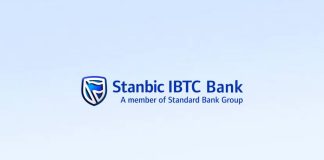The Central Bank of Nigeria (CBN) is to auction treasury bills worth N1.024 trillion in the fourth quarter of this year.
The central bank stated this in its Nigerian Treasury Bills Issue programme for the fourth quarter of the year that was posted on its website.
According to the banking sector regulator, 91-day bills worth N62.635 billion would be auctioned during the period, while for the 182-day bills, the CBN intends to issue a total of N148.667 billion.
In addition, N812.401 billion worth of 364-day bills would also be auctioned by the CBN during the period.
The central bank usually sell treasury bills twice a month to help the government fund its budget deficit, mop up excess liquidity in the system.
A member of the Monetary Policy Committee (MPC), Dr. Mahmoud Isa-Dutse, recently warned that the Nigerian banking system continues to harbour excessive liquidity with industry liquidity ratio far above the prescribed requirement. Specifically, Isa-Dutse put the average industry liquidity ratio as at June 30, 2018, at 46 per cent, compared to the minimum prudential requirement of 30 per cent.
This was reflected in his personal statement at the July 2018 MPC meeting posted on the CBN website. In his contribution at the meeting, Isa-Dutse, pointed out that industry data and complaints from real sector operators indicated weak lending by the banks, directly contributing to the weak economic recovery.
Nigeria’s Gross Domestic Product (GDP) slowed to 1.50 per cent (year-on-year) in the second quarter of the year (Q2, 2018), compared to the 1.95 per cent rate recorded in the preceding quarter, according to a recent data by the National Bureau of Statistics (NBS).
He said, “The liquidity overhang in the system is likely to worsen in the immediate future on account of 2018 budget execution, election spending and the new minimum wage proposals if approved.
“All hands must, therefore, be on deck to accelerate the rate of growth to a much higher level to enable us achieve the targets set in the Economic Recovery and Growth Plan (ERGP).”














